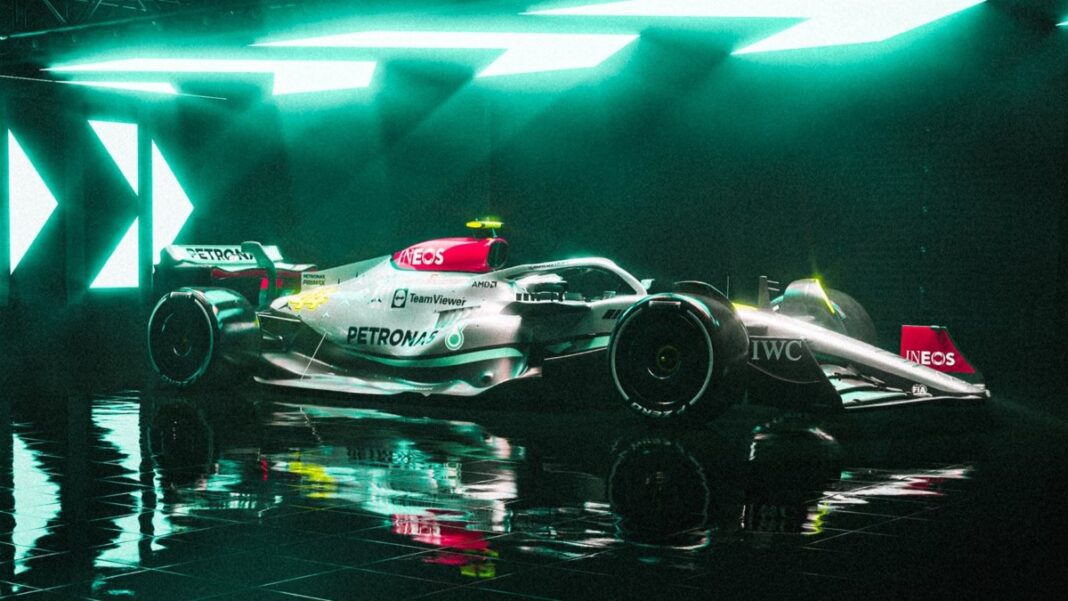UNITED KINGDOM: Mercedes upgraded their CFD systems to better replicate the W13’s porpoising in the first half of the 2022 F1 season to prevent its recurrence in subsequent seasons.
Last season, F1 switched from using over-car airflow to using the floors to generate downforce, introducing all-new ground effect aerodynamic cars.
The managing director of Formula 1, Ross Brawn, expressed surprise that some teams were “caught out” by the bouncing, eventually labelled as “porpoising.”
Running ground effect aerodynamics is known to cause porpoising, which is the car moving up and down as its aero stalls when it is pulled toward the track by downforce, only for the aero to kick in as it rises.
Mercedes had a worse situation than others due to its W13 exhibiting more extreme and violent bouncing in contrast to its competitors.
Lewis Hamilton and George Russell both expressed discomfort with sore necks and backs while bouncing from track to track.
In order to better comprehend the issue, Mercedes made modifications to their design tools, particularly their CFD systems.
Andrew Shovlin, Mercedes’ director of trackside engineering, acknowledges that to work on the W13 at the track to resolve its issues, Mercedes took a two-pronged approach by developing their tools back at the factory.
Mercedes’ approach worked, and the W13 gradually became faster. Russell led Hamilton across the finish line at the Sao Paulo Grand Prix, breaking Mercedes’ winless streak at the season’s penultimate race.
Even though Mercedes showed resurgence at the Sao Paulo Grand Prix, where Russell won the sprint race and finished in first place in the Grand Prix, the Brackley team came back to earth at the Abu Dhabi race.
Back in the factory, porpoising was notoriously difficult to replicate because the wind tunnel belt would break before a team could recreate the conditions necessary for bouncing, even with their improved design tools.
Additionally, as is customary, the teams may face a more significant porpoising issue this year as they look to increase downforce during the winter break in preparation for the 2023 season.
The FIA has taken steps to address the issue by raising the diffuser throat height and floor edges, but as many teams discovered during pre-season testing in 2022, none of the ten teams will know where they stand with the issue until they take to the track.
Also Read: Happy Birthday Lewis Hamilton: F1 Legend Turns 38



